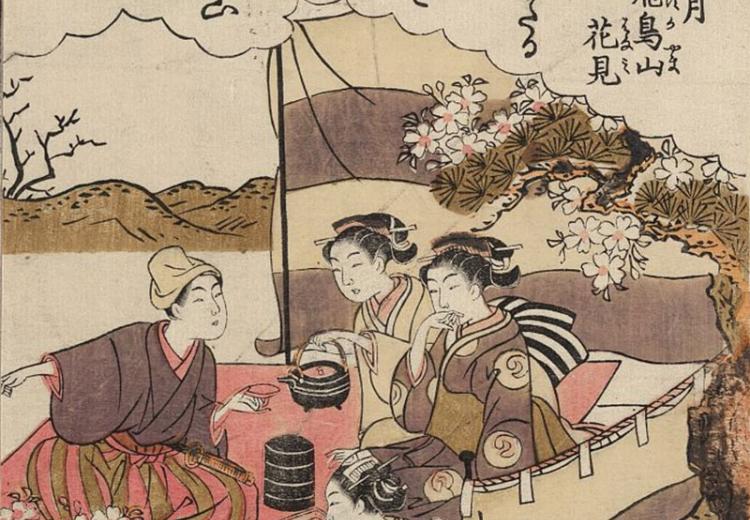Can You Haiku?

Print shows three women and a man having a small tea party beneath blossoming cherry trees.
A giant firefly:
that way, this way, that way, this --
and it passes by.-Issa (1762-1826)
Haiku show us the world in a water drop, providing a tiny lens through which to glimpse the miracle and mystery of life. Combining close observation with a moment of reflection, this simple yet highly sophisticated form of poetry can help sharpen students' response to language and enhance their powers of self-expression. In this lesson, students learn the rules and conventions of haiku, study examples by Japanese masters, and create haiku of their own.
Guiding Questions
How are haiku poems composed?
How do they differ from other forms of poetry?
How does a haiku paint a picture or create an image with just a few words?
What makes this form of poetry seem so personal, intimate, and appealing?
Learning Objectives
Describe the traditional rules and conventions of haiku.
Interpret examples of haiku.
Characterize the image-evoking power of haiku.
Develop a vocabulary and ideas for writing haiku.
Compose a haiku based on a personal experience.
